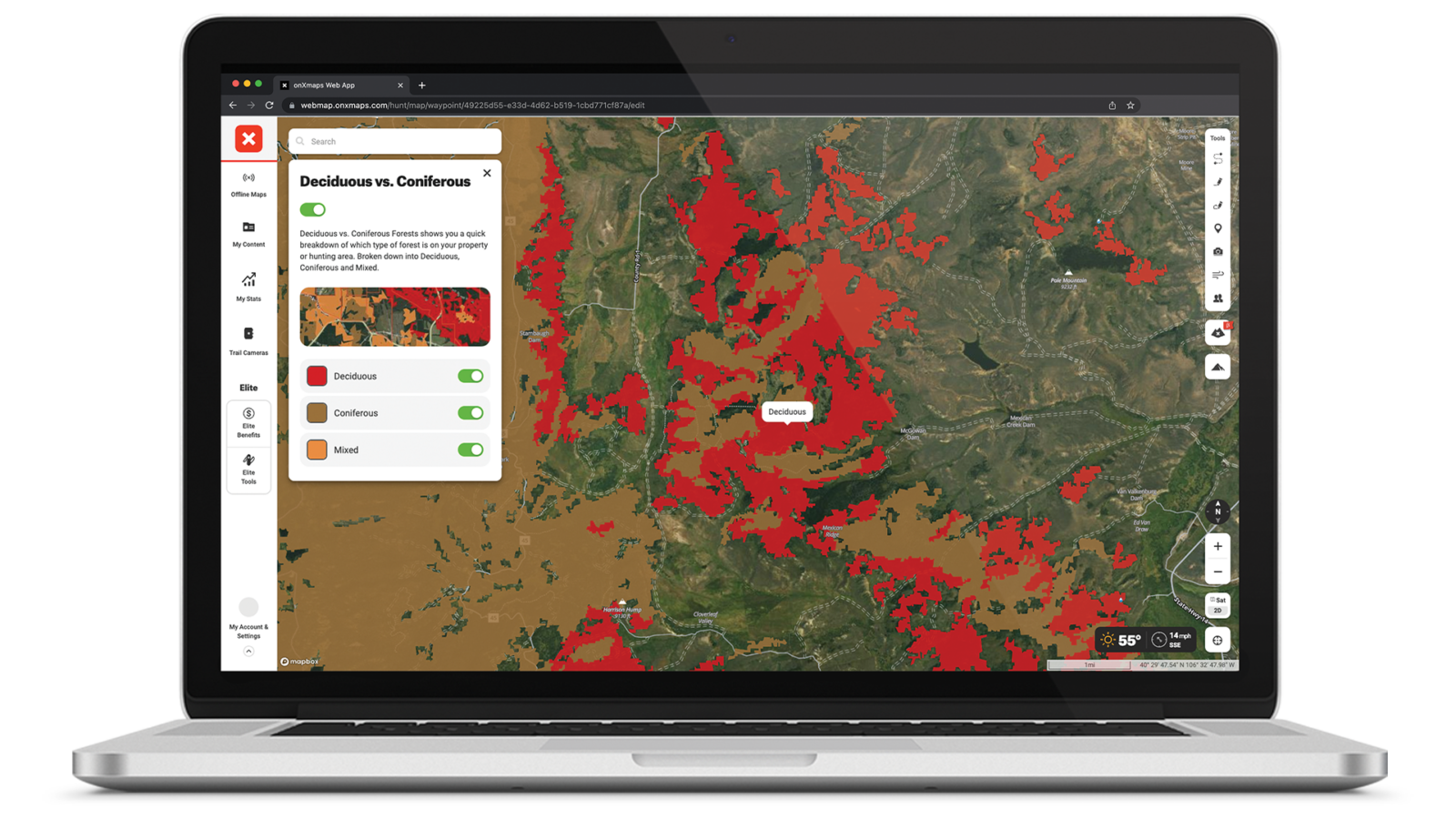First light was still hours away as Wade Shoemaker poked at several sausages illuminated by his headlamp on a boat ramp at the edge of a swamp. It was around 2 a.m.
Duck hunting in this area of Arkansas is competitive, and if you’re not first to the boat ramp, your early alarm may have been a waste. The wetlands he hunts have a strict launch time for boats—no engine-powered boat can hit the water until five. The scene resembles the start of a NASCAR race with boats lined up and engines humming, waiting for the signal to sprint to that secret location where the mallards are landing.
Between the drag race to the best pond to thinking of the perfect setup, decoy placement, and calling, Shoemaker has picked up several tips for coming home with a limit. Below are some of his favorite onX features for flooded timber duck hunting, plus tips for locating late-season birds in the bayou.
Navigate the Boat With Aerial Imagery

During the morning boat race out to the duck blind, Shoemaker uses onX Aerial Imagery to navigate through what he calls “hog trails”. The trails are spaces between the flooded timber barely wide enough for a boat to get through, and the higher the water level, the tighter the trails. Without zooming in on the high-resolution images, Shoemaker said he wouldn’t be able to follow the narrow, winding trails.
Shoemaker will also plan his path through the hog trails the night before he leaves and save his maps because most places he hunts have no cell service.
Draw Lines for the Final Sprint

The race to your favorite duck spot doesn’t end when you kill the engine. In the swamp, you can’t always throw an anchor directly on top of your hunting spot, so you still have to claim your rights on foot. Shoemaker said it’s not unheard of to hit the ground, decoys on your back, only to see headlamps bobbing in the darkness, beating you to your spot.
Now, before he sets foot in his boat, Shoemaker finds the exact point where he will throw the anchor, then draws a line from that point to where he will set up for the morning. Then the group knows the exact distance to cover and will send a runner out to claim the spot while the others gather and pack the gear from the boat, which can include up to six dozen decoys.
“It’s really nice to know how far you have to travel when you have that many decoys to pack,” Shoemaker said.
Identify the Right Trees

When scouting for a new area to hunt, Shoemaker uses the same attention to detail and knowledge of a seasoned whitetail hunter. He picks spots only if the surrounding trees produce the correct food for waterfowl. He knows that after a long migration, finding food is key, and pin oaks are one of a mallard’s favorite foods. When he discovers a good patch of flooded pin oaks, he uses the Area Shape tool to measure the acreage. Knowing the acreage gives him a good idea of how many trees are in the area and whether it’s enough to attract large flocks.
Look for Orange Feet

Shoemaker monitors the duck migration by watching mallard feet. Mallards are one of the few species with bright orange feet, and the orange feet theory goes like this: If you’re shooting mallards with bright orange feet, there must be migrating birds coming in. The longer birds congregate in the swamps, the dirtier their feet will get, thus dulling the color. If you see bright orange, assume you have a good migration pattern working in your favor.
Follow along on Wade’s adventures by following him on Instagram.